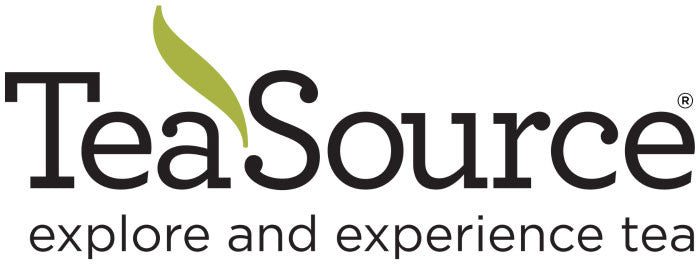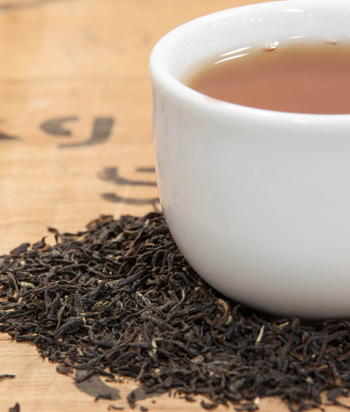-
Tea pluckers in Sri Lanka
Tea from Sri Lanka is immediately identifiable – bright, brisk, quenching, fruity - except for the fact that after gaining independence from the British, Sri Lanka still sells their teas under the old colonial name “Ceylon.” It proves that the idea of “brand management” goes back a lot further than modern management theory, but for the story of Ceylon tea we don’t have to go that far.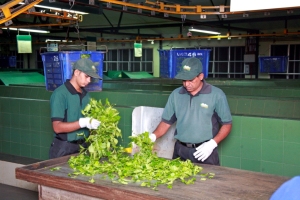
Up until the late nineteenth century, Ceylon was producing coffee, not tea. But the conversion began in 1869 when a parasitic fungus that attacked the coffee plants started spreading across the island. The former Dutch and now British occupiers had been experimenting with tea plants they brought to the island and the coffee blight prompted them to convert land to commercial tea production in place of coffee. British demand was so high for these new teas that by 1900 there were over 300,000 acres of tea planted on the tiny island.
Ceylon teas are noted for their “fruity” and brisk flavors, though this is not why you will often see the words “Orange Pekoe” on a package of Ceylon tea (the name has nothing to do with oranges – even more curious is that no one exactly knows how it got the name “Orange Pekoe”, though there are theories). Orange Pekoe or “OP” is in reference to the leaf grading system used in Ceylon teas (and other countries). In the most simple of definitions (and therefore not without inaccuracies) OP is the longer, whole leaf grade, and BOP – or “Broken Orange Pekoe” - is the broken or smaller leaf grade.
We could get very long-winded and annoyingly academic if we wanted to start listing all the nuances and exceptions within that definition, but it’s more important to note that the grading system is not necessarily a judgment on quality, but rather a categorization of size and appearance.
Though it is tiny in size (approximately the size of West Virginia), Sri Lanka is the fourth largest tea producer in the world, at over 325,000 metric tons per year. Part of this is attributable to its warm, lush, tropical environment that prevents the bushes from going into dormancy. This allows the plants to be picked year round, with some areas experiencing fairly dramatic seasonal variation. Because of the year-round growth, Ceylon teas are not grouped into 1st or 2nd flushes like Indian teas nor have anything similar to the spring tea distinction in China. However, the plants are rested periodically by heavily pruning them back to maintain quality and longevity (the plants can stay productive for approximately 40 years, give or take depending on the region).
Quality control during the withering process.
Though its tea history is relatively short, Sri Lanka is always singled out for its commitment to quality. In the 90’s and early 2000’s, Africa and even a significant portion of India focused on producing more tea instead of great tea. Sri Lanka resisted this trend. Ceylon black teas are consistently some of the finest in world and deserve the attention of anyone with even a casual interest tea.
Beautiful map of Southern India and the island of Sri Lanka, still labeled as “Ceylon."
-

Goomtee Tea Estate in DarjeelingDarjeeling is one of the best known “brands” in tea. Even those who don’t drink or care about tea have at least heard the name. But what is “Darjeeling” tea and why is the name so famous?
For starters, Darjeeling is actually a town/district located at the edge of the Himalayan mountain range in northeast India. It’s not Darjeeling tea if it doesn’t come from this district. But the tea plant is not native to this area. The only reason it grows here goes all the way back to the early 1800’s when the British were trying to figure out how to circumvent the Chinese monopoly on tea. The early growing experiments failed, and a native Indian tea plant was later discovered in Assam (Camellia sinensis var. assamica). But these Chinese teas plants brought to the mountains of Darjeeling eventually took root and thrived. The Chinese plants fared better in the higher elevations and cooler temperatures of Darjeeling and stood out for their unique fragrance and complex flavors (most Darjeeling teas are grown between 2,000 and 7,000 feet). Over time the region has developed an international reputation, which has boosted demand and prices.

The reputation is well deserved and came from a number of carefully managed factors. The Darjeeling Tea Association has protected and promoted the Darjeeling “brand” with a French-like zeal (think Champagne), highlighting their unique terroir (the total of environmental factors), beautiful estates, and seasonal variations. Three seasonal variations define the inherent character and flavor of Darjeeling tea.
First Flush
These teas are produced from the first plucking of the new shoots that appear in the spring (March through mid-April) after the plant has come out of its winter dormancy. Like many spring teas around the world, first flush Darjeeling teas are highly sought after and produce a cup that is light, fresh, aromatic, and possess a fair amount of astringency. The dry leaf will often contain a lot of green color, which comes from a long withering process that removes enough moisture to inhibit oxidation, but makes the tea more fragrant.

Second Flush
This is the summer production of teas from the shoots that follow the first flush. In some respects this is more of a “classic” Darjeeling since it tends to bring out those “muscatel” flavors Darjeelings are famous for. The cup tends to be richer, and more full-bodied. It is usually less astringent than the first flush teas and can come off as almost “fruity.”
Autumnal Flush
This last picking of the season doesn’t always get the same attention as the first two flushes, but great teas can still be produced and sometimes purchased at an excellent value. The autumnal flush teas are typically the most full-bodied of the Darjeelings with a more balanced and less astringent cup.Unblended Darjeeling teas should (in our opinion) clearly identify which estate it came from, which flush, and the leaf grade (a series of letter that notes leaf sizes and quality of pluck). We find most of the fine, orthodox teas coming out of Darjeeling will be graded “TGFOP” or “TGFOP1” (Tippy, Golden, Flowery Orange Pekoe – with the “1” denoting exceptional quality). This has always sounded like a bit of “artistic license” to me, but it’s hard to blame them for wanting to present the tea in the best way possible. Ultimately, the leaf and cup will say what needs to be said.
There’s much more that can be said about these wonderful teas from an exotic location. Much of this was a gross simplification, but it’s easy to get long-winded and off track. For the uninitiated, I hope it gives a basic understanding of what these teas are like, where they come from, and how to identify them.Check out our Darjeeling infographic!
Shop Darjeeling Teas
Enjoy!
-Michael Lannier
TeaSource manager -
Two days before New Year’s Day we received our annual big shipment from China by sea. Two days after New Years we received our annual big shipment from India, also by sea. (For reference, we also receive numerous smaller air shipments from China, India, etc. throughout the year).
So, it’s been busy around here and we’ve got some new teas and decided to shine a spotlight on them during our Web Party. All of these teas will be offered at 20% off regular price, both on the web and in-store. Prices below reflect this 20% discount.
India, Darjeeling, Jungpana Estate 2nd Flush FTGFOP1, Organic
Special price $9.51 per 4 oz.
I got lucky; this black tea is a steal. Full-bodied (for a Darjeeling), smooth, flavorful, a little fruity (muscatel grapes), and a lingering tingle on the tongue instead of astringency. Excellent black tea at an incredible price.Wuling Mountain Black
Special price $7.59 per 4 oz.
Roasted cocoa, that's the aroma of this gorgeous, wiry, twisted leaf. The steeped cup is deep, rich, toasty, slightly sweet, and completely satisfying. This unique black tea is only available in limited quantities. This lovely black tea is grown in northern Hunan province of China. This tea is also referred to as Xiang Cha, roughly translated this mean ‘fragrant tea.’ When steeped, this tea has an almost Keemun like character, i.e. wine-y thickness to it. I strongly suspect this black tea has some of the chemical compound myrcenal (a totally naturally occurring chemical compound found in some Anhui tea bushes) that is generally considered responsible for the classic Keemun winey/sweet taste and aromatic characteristics.Golden Mao Feng
Special price of $7.18 per 4 oz.
If there was such a thing as cocoa-honey, this tea is what it would taste like. Large, golden, wiry, twisted leaves with a sweet, dark aroma produce a liquor that is very thick, velvety, sweet, almost cocooay. This black tea is from Guangxi province in southern China (just east of Yunnan), so it sorts of tastes like a cross between a Yunnan tea and a Keemun tea.Rare Orchid Oolong S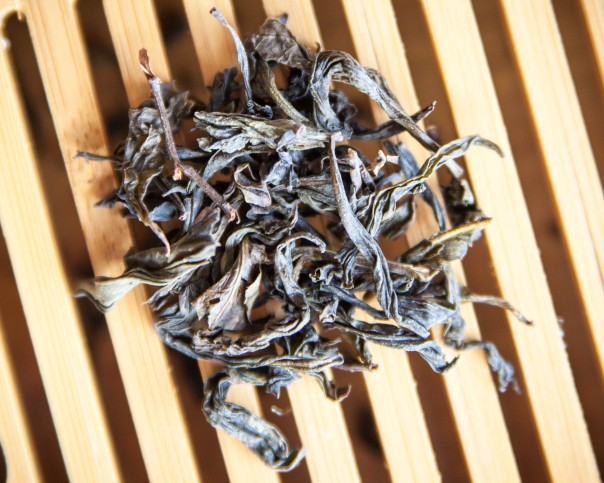
pecial price $14.78
This rare regional oolong, from Wuyi Mtn, Fujian, yields a light liquor, but with great aroma, taste, and texture. You'll experience: sweet nutty, fruity, honey, and silky over many steepings. These long large twisted bronze/brown leaves are produced at more than 1000 feet elevation from the Qi Lan cultivar.Silver Bud White tea (aka Ya Bao)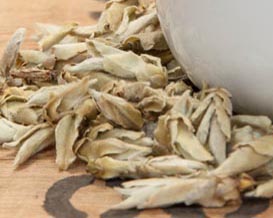
Special price $7.19
This rare white tea from Yunnan is a winter-pluck tea with huge downy buds and leaves from wild growing tea trees and produces a liquor that is mellow, sweet, slightly fruity (ripe plums?), and lingers with a soft floral finish. Can also be aged, as a puer. This tea is from the wild growing tea trees in the mountains around Xishuangbanna, Yunnan province, China. It is all hand-plucked and processed and rarely seen outside of China. It is processed as a white tea, but is also meant to be aged as a puer. So, in one sense, it is similar to a sheng puer. But, as with many Sheng puers, it is also marvelous to drink as is immediately, without waiting the aging process.2007 Guangxi Dark Tea Cake
Special price of $34.39 per cake
This tea will be shipped in a special presentation gift box, including a stainless steel puer knife at no extra cost. This 357 gram dark tea cake from the Baise district of Guangxi province is very similar to an aged sheng puer. The liquor is very fresh, vibrant, crisp, invigorating, and smooth with a hint of a toasty note. The leaves (local Guangxi tea cultivar Lingyun White Downy tea) for this tea were grown in 2005, then aged and made into this cake in 2007. An exceptional and very unusual dark tea.Up & Coming
Our annual big shipment from Sri Lanka (Ceylon) is due any week now and we have two new very cool teas coming in. We’ll get these on the web as soon as they arrive.Ceylon Burning Sun
This tea from the Lumbini Estate, grade of FBOPF, is a perfect blend of strength and complexity-which is pretty rare. The Lumbini Estate has blended many broken golden tips into this tea, giving it a thick/weighty mouth feel, with multiple dark fruit notes, a clarity and brightness as you sip, and a lingering finish with just a hint of briskness.Ceylon Oodooware Estate BOP
This is a wonderfully aromatic tea from the southern regions of Ceylon. The large wiry leaves produce a liquor that is very smooth, mellow, with a hint of a melony sweetness, in a cup that is very balanced and full-bodied. -
Manufacturing tea is an art, it’s poetry in motion, it’s farmer-chef-craftsman-mechanic-chemist, all melded together. A few weeks ago, I did it in a conference room in Atlanta, GA. And "they" were right, even trying this was crazy... but, son-of-a-gun, the teas actually turned out pretty good. You can come to TeaSource Eden Prairie on Sunday, December 8th from Noon-2p and taste them for yourself!
Our fresh tea leaves: soon to be white, green, yellow, oolong and black.
In late October, I co-presented a workshop to tea professionals at the World Tea East Exhibition in Atlanta, GA. This workshop was called Processing Tea: An Experiential Workshop. The idea was we would fly in just plucked tea leaves from Hawaii by Overnight Air. Then over the two days of the workshop, using these fresh tea leaves we (along with the class attendees) would manufacture: white, green, yellow, oolong, and black tea. I presented this class with Donna Fellman of the World Tea Academy (part of World Tea Media). Donna and World Tea Media deserve tremendous credit for taking a huge chance, putting up the cash necessary, and providing all the support possible. Donna is one of the world’s great tea educators. For the record, this was the third time we did this class. In this blog, over the next few posts, I am going to tell the story of what happened. In Hawaii, Eva Stone, proprietor of Tea Hawaii & Co., supplied us with fresh plucked tea leaves.

The tea fields and the home of Tea Hawaii & Co.Based on experience, Donna has developed a system of packing and layering and insulating the tea leaves using dry ice and coolers: so that when we unpacked the tea leaves in Atlanta, they looked like they had been plucked off the bush about three hours before.

Donna Fellman, unpacking and sorting the just arrived tea leaves.
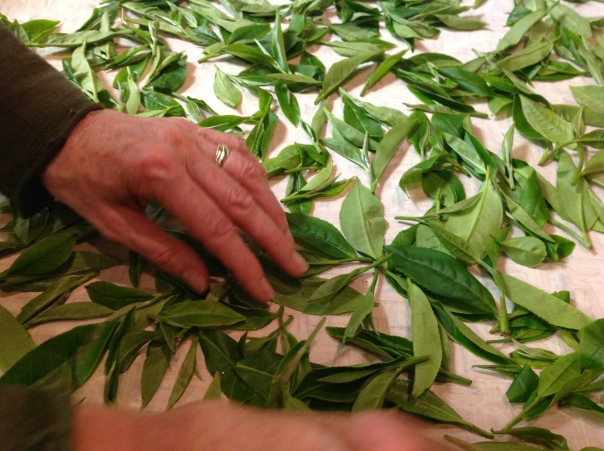
Take a look at those leaves. This is what tea leaves look like, a few hours after being plucked. A relatively small amount of withering has taken place, so the leaf gets kind of floppy (I try to avoid the word flaccid). This also happens as the leaves come in from the fields to the factories. In our case, the withering took place on the FedEx plane ride, but this withering was slowed down considerably by the packing and dry ice. The leaves arrived pretty much ready for the first step in manufacture.
The fresh tea leaves, laid out, ready for processing.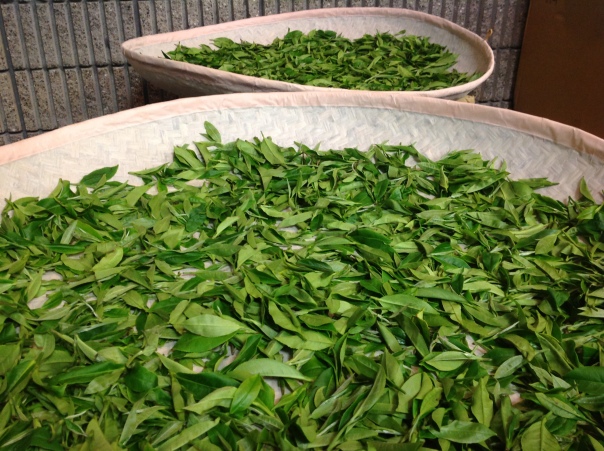 More tea leaves laid out, ready for manufacture: loosely organized into piles for white, green, yellow, oolong, and black tea.[/caption]
More tea leaves laid out, ready for manufacture: loosely organized into piles for white, green, yellow, oolong, and black tea.[/caption]
During two, three-hour workshops, over each of the next two days, we were going to try to mimic what happens at a tea factory, as the freshly plucked tea leaves are brought in from the field. By definition, this is kinda crazy. We weren’t in a tea factory—we were in a conference room at a convention center. We were going to try to make five different types of tea: all in the same room, at the same time. We didn’t have any of the equipment available at a tea factory. The climate was totally wrong and uncontrollable (we were battling hotel-level air conditioning). And most importantly we are NOT tea manufacturing experts. Donna’s a great communicator, and I’m just a tea merchant. They were right, this was crazy—who the heck did we think we were ??? But we were determined to try and manufacture by hand all categories of tea: except for Dark Tea & Puer --- I admit it, we chickened out on this --- maybe next year. And not only were we going to manufacture these teas, we were also going to demonstrate and teach others how these teas are processed.
Donna and Eva, kicking off the class.
Over the next few posts I will show and tell details about processing all five of these teas. The bottom line is, the class worked. And on Sunday, December 8th from Noon until 2:00pm at our Eden Prairie TeaSource we will be steeping and sampling all five of these teas we made. I should note there is not much of each tea, so when we run out (and we will) that’s it. This is almost a once in a lifetime experience, especially if you are unlikely to ever visit an actual tea estate.
Also, I will be there just to talk about tea, answer tea questions, and chat about all things camellia sinensis. Stop by if you get the chance.
-Bill Waddington
-
What is a Gaiwan?
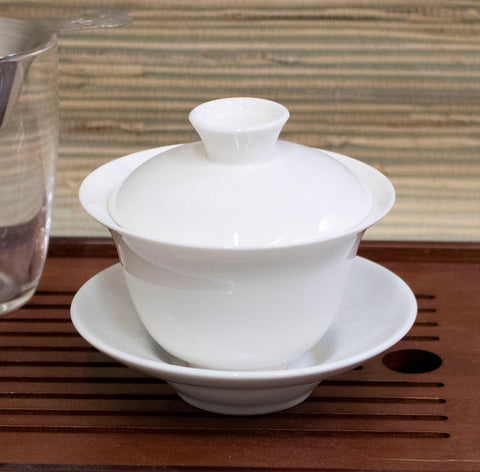
A gaiwan is a small vessel for brewing tea that takes the place of a teapot. Gaiwans have been used in China since the Ming Dynasty and consist of three parts: a bowl, lid, and saucer. It is typically small enough that all three parts can be picked up in one hand.Benefits of a Gaiwan
Though a gaiwan can be used in many ways, its best used as a way to concentrate the flavors and aromas of the tea and deliver them in a series of steeps. It allows for greater control and observation of how the leaves behave and change over time.Watch this short video about how to use a gaiwan!
How to Use Your Gaiwan
Put the tea leaves in the bowl. The amount will depend on the tea and personal preference, but 6 grams is a good place to start.
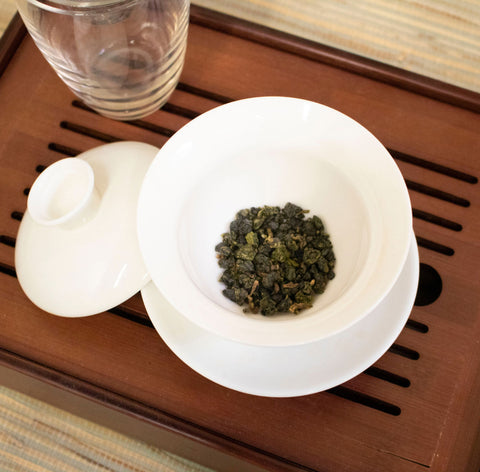
Steep the leaves. Add hot water to the bowl. In most cases, we recommend using boiling water, but that’s up to the individual. Return the lid to the bowl.
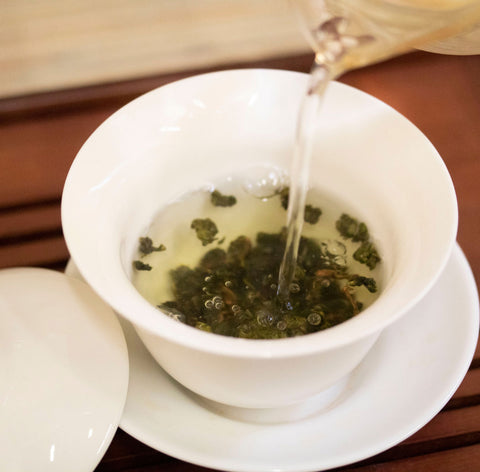
Crack the lid. Steep the tea for approximately 20-30 seconds (longer for later steeps). When the steeping is done, tilt the lid so it is slightly askew. There should be an opening big enough for water to flow out, but small enough to keep the leaves from escaping.
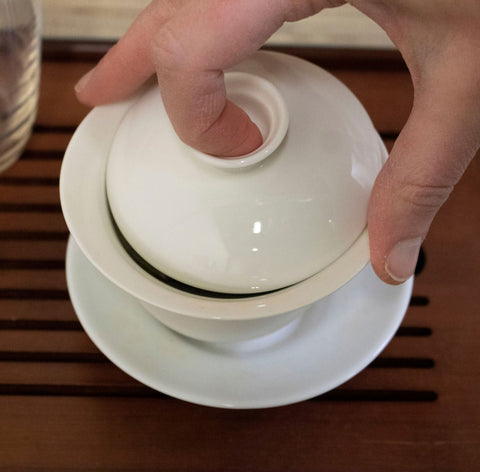
Hold the Gaiwan. There are several ways to pick up your gaiwan. Experiment and find the method that feels natural for you. Try using your thumb and middle finger to hold the rim of the bowl. (Hold just the very top to prevent scalding fingers.) Then use your index finger, or index knuckle, to hold the lid firmly in place.
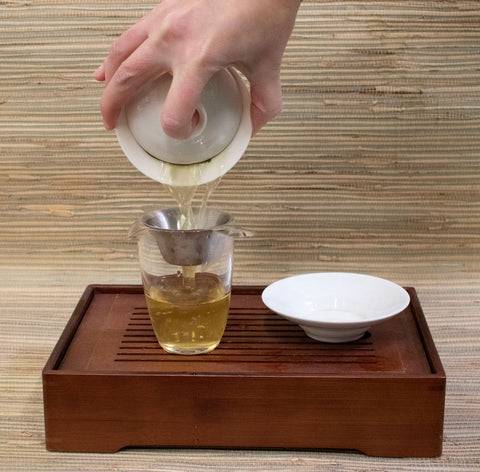
Decant: Holding your gaiwan firmly, tilt it toward your pitcher/cup. Do this with confidence and the tea will pour smoothly. It takes a little practice. Be sure that all the liquid is out otherwise the tea will continue to steep. Pouring through a filter will help catch any leaf particulate that escapes.
Re-steep the same leaves 5-6 times, increasing the time with each subsequent steep.
-
As the Tea and Cheese Pairing Class drifts into history, the flavors are still lingering in our minds. On the afternoon of October 26th, Steven Levine, a local cheese Guru, showed up at the Eden Prairie TeaSource with eight exceptional specialty cheeses. Class attendees took their seats as regular customers looked on with curious expressions tinged with jealousy.
The fragrance of cheese was threatening to overwhelm the aroma of tea, so I got the first tea steeping and the class commenced. The pairings ranged in flavor, intensity, and complexity. Some were smooth, decadent, and buttery like the Delice de Bourgogne Brie with Milk Oolong, Traditional. Others sharp and brisk like our ‘Everyman Pairing’: the Collier’s Powerful Cheddar with the classic breakfast blend style tea, Ceylon Lumbini FBOP.

The favorite tea of the evening was the new Fujian black tea, Jin Jun Mei, for its rich depth and unique bold character. This is not an inexpensive tea, but it would make a fabulous holiday gift. The cheese that stole the show, and my personal favorite, was the beautiful Humbolt Fog. This cheese literally tasted like fog. It was so complex that every tea we paired it with pulled another layer of flavor out of the cheese.
Our final pairing was St. Pete’s Select Blue Cheese with the exquisite 1999 Sheng Puer, both aged and riddled with active microbes. This Puer comes as compressed cake of tea, a tea-making method new to the West, but with deep roots in China. This tea reminds me of something Aragorn would have carried across Middle Earth and steeped up for the Hobbit’s breakfast on the road to Mordor!
All of the incredible cheeses for this workshop were purchased from Surdyk’s Liquor and Cheese Shop - my favorite place in the Twin Cities to buy cheese (and wine). Their variety and quality is fantastic.
Everyone went home full of calcium and caffeine, making it a tea and cheese success story. I speak for both Steven and myself when I say the class was exceptionally fun, filling, and informative. We hope we can teach it again for the spring class cycle.
-Jessica Hanley
TeaSource Manager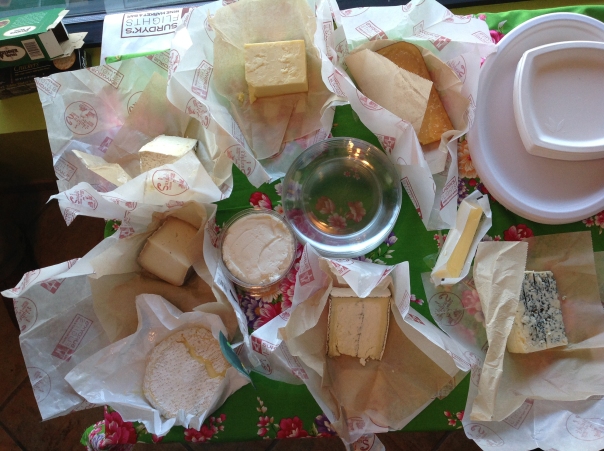
Chevre Goat Cheese 88th Night Shincha Collier’s Powerful Cheddar Ceylon Lumbini FBOP Delice de Bourgogne Brie Milk Oolong, Traditional Bent River Camembert 1995 Aged Pouchong Spanish Garrotxa Jin Jun Mei Humbolt Fog Tung Ting Light Roast Five year Gouda Assam, Harmutty Estate St. Pete’s Select Blue 1999 Sheng Puer
